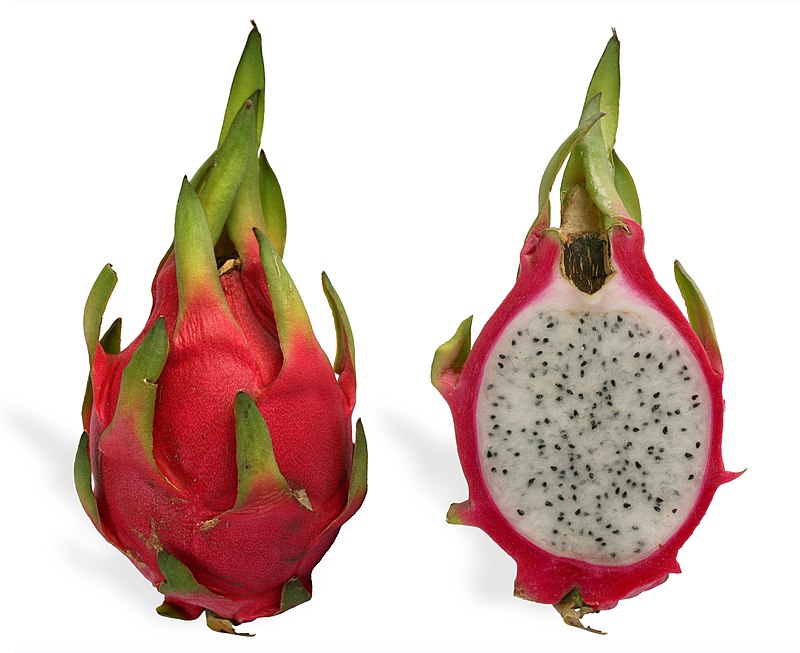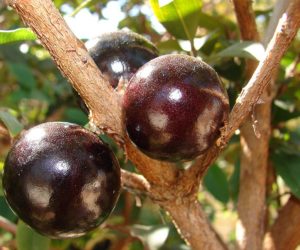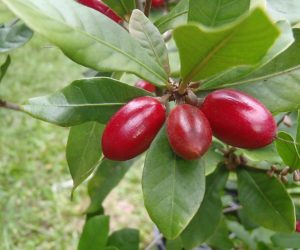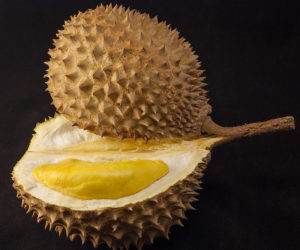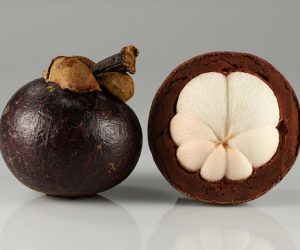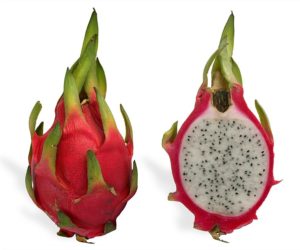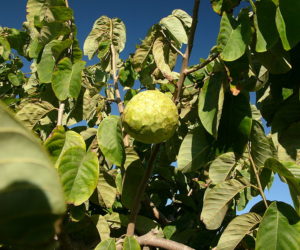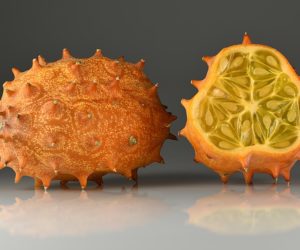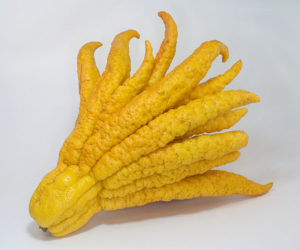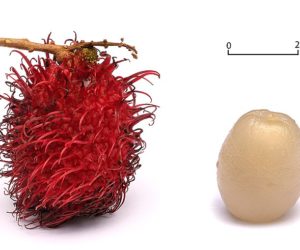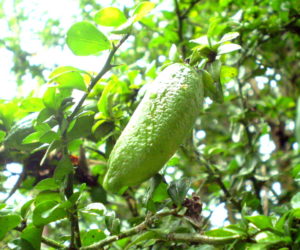It’s difficult to definitively rank the rarest fruits in the world since rarity can depend on factors like availability, cultivation, and demand. However, here are ten fruits that are considered rare and hard to find:
Jabuticaba
– a small purple fruit native to Brazil that grows directly on the trunk and branches of the tree.
Jabuticaba, also known as Brazilian grape tree or jaboticaba, is a small purple fruit native to Brazil that grows directly on the trunk and branches of the tree. The tree is slow-growing and can reach up to 40 feet in height, although it typically grows to be much smaller. The fruit has a dark, purplish-black skin with a white, jelly-like pulp inside that surrounds 1-4 seeds.
Jabuticaba is a popular fruit in Brazil, where it’s often eaten fresh or used in juices, jams, and wine. The flavor is described as sweet and grape-like, with a slightly tart taste. The fruit is also high in antioxidants, fiber, and vitamin C.
Harvesting jabuticaba can be a labor-intensive process since the fruit grows directly on the trunk and branches of the tree. The fruit is usually harvested by hand and can be eaten fresh or used in recipes. It’s not widely cultivated outside of Brazil, making it a rare and exotic fruit in other parts of the world.
In addition to its culinary uses, jabuticaba has also been used in traditional medicine to treat a variety of ailments, including respiratory issues, fever, and diarrhea. Some studies have even suggested that the fruit may have anti-inflammatory and anti-cancer properties.
Overall, jabuticaba is a unique and flavorful fruit that’s prized for its taste and health benefits.
Miracle Fruit
– a red berry that contains a molecule that alters the perception of taste, causing sour and bitter foods to taste sweet.
Miracle fruit, also known as Synsepalum dulcificum, is a small red berry that’s native to West Africa. The fruit contains a molecule called miraculin, which alters the perception of taste, causing sour and bitter foods to taste sweet. This effect can last for up to two hours after consuming the fruit.
The berry itself has a mild taste and is often used as a natural sweetener. However, its main use is to change the taste of other foods. When eaten before consuming sour or bitter foods, such as lemons, vinegar, or grapefruit, the miraculin in the fruit binds to taste receptors on the tongue and makes these foods taste sweet.
Miracle fruit has gained popularity as a party trick or food adventure, and it’s sometimes used to make low-calorie or sour foods more palatable. It’s also been used by people with certain medical conditions, such as chemotherapy patients, who experience changes in taste and find some foods unappealing.
Miracle fruit is not widely cultivated and can be difficult to find, but it’s sometimes available in specialty food stores or online. It’s typically sold in tablet form, as fresh berries have a short shelf life.
While the effects of miracle fruit are generally considered safe, it’s important to note that it can alter the perception of taste in a way that may be dangerous. For example, it can make spoiled food taste sweet, leading people to eat it even though it may be unsafe. Additionally, some people may be allergic to the fruit, so caution should be used when consuming it.
Durian
– a fruit from Southeast Asia known for its pungent odor and spiky exterior. It’s banned in some public places due to its strong smell.
Durian is a large, spiky fruit that’s native to Southeast Asia, particularly Malaysia, Indonesia, and Thailand. It’s known for its pungent odor, which has been described as a combination of rotten onions, turpentine, and gym socks. Because of its strong smell, durian is often banned from public places such as hotels, airports, and public transportation in some countries.
The fruit itself is large, typically weighing up to 2-7 pounds, and has a thick, spiky outer shell. Inside, the flesh of the fruit is soft and custard-like, with a distinct odor and flavor that’s been described as creamy, sweet, and slightly savory. The flavor is often compared to that of almonds or vanilla custard, with hints of garlic or onion.
Durian is a popular fruit in Southeast Asia and is used in a variety of dishes, including desserts, candies, and ice cream. The fruit is also rich in vitamins, minerals, and healthy fats, and is sometimes used in traditional medicine to treat a variety of ailments.
Despite its popularity in Southeast Asia, durian is not widely consumed in other parts of the world, in part due to its strong smell. However, it has gained a cult following among some food enthusiasts who appreciate its unique flavor and texture.
If you’re interested in trying durian, it’s important to note that the fruit can be difficult to find and expensive outside of Southeast Asia. Additionally, due to the fruit’s strong smell, some people may find it unpalatable.
Mangosteen
– a tropical fruit native to Southeast Asia with a sweet and tangy flavor.
Mangosteen, also known as the “Queen of Fruits,” is a tropical fruit that’s native to Southeast Asia, particularly Thailand, Indonesia, and Malaysia. The fruit is about the size of a small apple and has a thick, dark purple rind that’s hard to open. Inside, the fruit has a soft, juicy flesh that’s divided into several segments, similar to an orange.
The flesh of the mangosteen is white, juicy, and sweet, with a flavor that’s been described as a combination of strawberry, peach, and pineapple. The fruit is often eaten fresh or used in desserts, juices, and other culinary applications.
Mangosteen is also rich in antioxidants, vitamins, and minerals, and is sometimes used in traditional medicine to treat a variety of ailments, including diarrhea, infections, and skin conditions.
Mangosteen can be difficult to find outside of Southeast Asia, but it’s sometimes available in specialty food stores or online. When selecting a mangosteen, it’s important to look for fruits that are firm and heavy for their size, with a smooth, unblemished rind.
It’s also important to note that the rind of the mangosteen is not edible and can be difficult to remove. However, some people use the rind to make tea or other beverages, as it also contains beneficial compounds.
Overall, mangosteen is a unique and flavorful fruit that’s prized for its taste and health benefits. It’s a favorite of many people in Southeast Asia and is increasingly becoming popular in other parts of the world.
Pitaya
– also known as dragon fruit, it has a unique appearance and is native to Central and South America.
Pitaya, also known as dragon fruit, is a tropical fruit that’s native to Mexico and Central and South America, but is now also grown in Southeast Asia and other parts of the world. The fruit is about the size of a large apple and has a thick, scaly, bright pink or yellow rind that’s easy to peel.
Inside, the fruit has a white or pink, juicy flesh that’s studded with small black seeds. The flesh has a mildly sweet flavor with a texture that’s similar to kiwi fruit. The black seeds are edible but often discarded due to their crunchy texture.
Pitaya is a good source of vitamins and minerals, particularly vitamin C, iron, and calcium, and is also rich in antioxidants. It’s often eaten fresh, either on its own or as a colorful addition to fruit salads, smoothies, and other dishes.
In addition to its culinary uses, pitaya is sometimes used in traditional medicine to treat a variety of ailments, including high blood pressure, diabetes, and inflammation.
Pitaya is widely available in many parts of the world and can be found in most grocery stores and supermarkets. When selecting a pitaya, it’s important to look for fruits that are firm, with bright, evenly colored skin that’s free from blemishes.
Overall, pitaya is a unique and flavorful fruit that’s prized for its vibrant color and health benefits. It’s a popular choice for people looking to add a nutritious and colorful addition to their diet.
Cherimoya
– a sweet and creamy fruit that’s native to the Andes mountains of South America.
Cherimoya, also known as the “custard apple,” is a tropical fruit that’s native to South America, particularly Peru, Ecuador, and Colombia. The fruit is about the size of a large apple and has a green, scaly, and bumpy outer skin that’s easy to cut through.
Inside, the fruit has a white, creamy flesh that’s dotted with large black seeds. The flesh has a sweet, custard-like flavor with a texture that’s soft and creamy, similar to that of a ripe avocado. The black seeds are not edible and should be removed before eating.
Cherimoya is a good source of vitamins and minerals, particularly vitamin C and potassium, and is also rich in fiber. It’s often eaten fresh, either on its own or used in desserts, smoothies, and other culinary applications.
In addition to its culinary uses, cherimoya is sometimes used in traditional medicine to treat a variety of ailments, including digestive issues, fever, and high blood pressure.
Cherimoya is widely available in many parts of the world and can be found in most grocery stores and supermarkets. When selecting a cherimoya, it’s important to look for fruits that are firm but yield slightly to pressure, with a green skin that’s free from blemishes.
Overall, cherimoya is a unique and flavorful fruit that’s prized for its sweet and creamy taste and health benefits. It’s a popular choice for people looking to add a nutritious and delicious addition to their diet.
African Horned Cucumber
– also called Kiwano, this fruit has a spiky, orange exterior with green, jelly-like flesh inside.
African Horned Cucumber, also known as kiwano, jelly melon, or horned melon, is a unique fruit that’s native to sub-Saharan Africa. The fruit is about the size of a large orange and has a hard, spiky outer skin that’s typically yellow or orange in color.
Inside, the fruit has a gelatinous green flesh that’s dotted with small edible seeds. The flesh has a sweet and tangy flavor with a texture that’s similar to that of a cucumber or a passion fruit. The seeds are often eaten along with the flesh, and are rich in protein and healthy fats.
African Horned Cucumber is a good source of vitamins and minerals, particularly vitamin C and potassium, and is also rich in antioxidants. It’s often eaten fresh, either on its own or used in salads, smoothies, and other culinary applications.
In addition to its culinary uses, African Horned Cucumber is sometimes used in traditional medicine to treat a variety of ailments, including respiratory issues, high blood pressure, and insomnia.
African Horned Cucumber is not widely available in many parts of the world, but can sometimes be found in specialty food stores or online. When selecting a fruit, it’s important to look for fruits that are firm, with a bright, even color and a spiky outer skin that’s not too soft.
Overall, African Horned Cucumber is a unique and flavorful fruit that’s prized for its sweet and tangy taste and health benefits. It’s a popular choice for people looking to try something new and exotic, and adds a fun and colorful addition to any dish.
Buddha’s Hand
– a type of citron fruit with a unique shape and fragrance that’s often used for decoration or as a zest for cooking.
Buddha’s Hand is a citrus fruit that’s native to India and China. It’s also known as the “fingered citron” or “Buddha’s fingers” due to its unique shape. Unlike other citrus fruits, Buddha’s Hand doesn’t have any pulp or juice, and is primarily used for its fragrant rind and zest.
The fruit is shaped like a hand with long, finger-like protrusions that can be segmented into individual sections. The outer rind is thick and often bright yellow, and is highly fragrant with a complex citrus aroma. The inner pith of the fruit is white and somewhat spongy.
Buddha’s Hand is primarily used in culinary applications, particularly in Asian cuisine. The fragrant rind is often grated and used to flavor desserts, pastries, and savory dishes. The zest can also be used in cocktails and other beverages.
In addition to its culinary uses, Buddha’s Hand is sometimes used in traditional medicine to treat a variety of ailments, including nausea, coughs, and skin conditions.
Buddha’s Hand is not widely available in many parts of the world, but can sometimes be found in specialty food stores or online. When selecting a fruit, it’s important to look for fruits that are heavy for their size and have a bright, even color with no signs of blemishes or soft spots.
Overall, Buddha’s Hand is a unique and flavorful fruit that’s prized for its fragrant rind and zest. It’s a popular choice for people looking to add a distinctive and exotic citrus flavor to their cooking and baking.
Rambutan
– a red, hairy fruit native to Southeast Asia with a sweet and juicy flesh.
Rambutan is a tropical fruit that’s native to Southeast Asia, particularly Malaysia, Indonesia, and the Philippines. The fruit is about the size of a golf ball and has a spiky red or yellow outer skin that’s covered in soft, hair-like tendrils.
Inside, the fruit has a white, translucent flesh that’s sweet and juicy, with a flavor that’s often compared to lychee or grape. The flesh surrounds a large, inedible seed in the center of the fruit.
Rambutan is a good source of vitamins and minerals, particularly vitamin C and iron, and is also rich in antioxidants. It’s often eaten fresh, either on its own or used in salads, smoothies, and other culinary applications.
In addition to its culinary uses, Rambutan is sometimes used in traditional medicine to treat a variety of ailments, including diarrhea, fever, and skin infections.
Rambutan is widely available in many parts of the world and can be found in most grocery stores and supermarkets. When selecting a Rambutan, it’s important to look for fruits that are firm but yield slightly to pressure, with a bright, even color and soft tendrils.
Overall, Rambutan is a unique and flavorful fruit that’s prized for its sweet and juicy taste and health benefits. It’s a popular choice for people looking to add a nutritious and delicious addition to their diet.
Finger Lime
– a small, cylindrical fruit with a tart flavor and caviar-like texture. It’s native to Australia and is often used as a garnish in gourmet dishes.
Finger Lime, also known as caviar lime, is a citrus fruit that’s native to Australia. The fruit is about the size of a large finger and has a long, cylindrical shape. The outer skin is thin and comes in a variety of colors, including green, yellow, pink, and black.
Inside, the fruit has small, pearl-like vesicles that are juicy and burst in the mouth with a tangy, citrusy flavor. The tiny vesicles have a texture that’s often compared to caviar, which has led to the fruit’s other common name.
Finger Lime is a good source of vitamins and minerals, particularly vitamin C and potassium, and is also rich in antioxidants. It’s often used in culinary applications, particularly in modern and innovative cuisine. The small, popping pearls of the fruit add texture and flavor to dishes, and are often used to garnish seafood, salads, and desserts.
In addition to its culinary uses, Finger Lime is sometimes used in traditional medicine to treat a variety of ailments, including respiratory issues, stomach disorders, and inflammation.
Finger Lime is not widely available in many parts of the world, but can sometimes be found in specialty food stores or online. When selecting a fruit, it’s important to look for fruits that are firm, with a bright, even color and a thin skin that’s not too soft.
Overall, Finger Lime is a unique and flavorful fruit that’s prized for its tangy, citrusy flavor and popping texture. It’s a popular choice for people looking to add a modern and innovative twist to their culinary creations.
These are just a few examples of rare fruits in the world, and there are many more out there waiting to be discovered.

